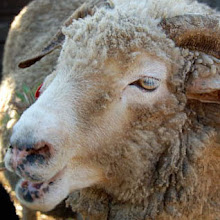 You’re off for a business meeting. You already traveled several kilometers from home and you have to be in the meeting place in 10 minutes. Then, you would find out that you left something very important – your business documents. Oh, this is really a big problem! --- Not anymore, we have lots of self-service digital printing kiosks around us now. Yeah! You heard it right. These kiosks will give us quality digital prints at any place every time that we need them.
You’re off for a business meeting. You already traveled several kilometers from home and you have to be in the meeting place in 10 minutes. Then, you would find out that you left something very important – your business documents. Oh, this is really a big problem! --- Not anymore, we have lots of self-service digital printing kiosks around us now. Yeah! You heard it right. These kiosks will give us quality digital prints at any place every time that we need them.According to the article posted at the Digital Photograph Blog last July 19, 2004, the installation of self service digital printing kiosks is the best solution to help us in editing our photos and other documents and printing them from digital memory cards every time that we badly need them and we are away from our homes or our offices. Many printing companies already began to run radio and TV ads about their kiosks to drum up their digital printing business. Today, thousands of kiosks are now found in drug stores, grocery stores, photo shops, convenience stores, hotels, copy centers, office supply retailers, electronics outlets, gasoline stations, and other non-traditional channels.
These self-service digital printing kiosks truly provide us with a convenient and cost effective way of printing. To print our photos, we only need to insert the memory card from our digital cameras into a card reader located within the stand-alone printing kiosk. After selecting the photo size and the quantity, the images are then being printed in a matter of seconds on high quality digital photo paper. We can also customize our photos with colorful borders, backgrounds and other features. Regarding the payment for the printing cost, we will just simply swipe our credit cards and the amount will then be charged to our account.
Recent technologies like inkjet, dry film processing and thermal dye sub-printing make photo kiosk installation possible in places where conventional processing is not feasible. And because of these technologies that allow for self service printing of photographs, digital printing kiosks are making their way into all sorts of venues to fulfill this demand for convenient prints. After all, these kiosks offer in-store cross-merchandising possibilities.
According to a 2002 report issued by InfoTrends Research Group, a digital imaging research firm, the kiosk sector will continue its growth through 2006, but the poor economy is slowing that growth. In its report "Photo Kiosk and Retail Digital Photofinishing Forecast," it was stated that the number of installed photo kiosks in North America increased from about 26,000 in 2000 to 28,000 in 2001. Moreover, steady growth will continue, with 2006 estimates set at 33,000 units, but that is a far cry from 2001’s prediction of 150,000 units by 2006.
The report also explains that self-service digital printing kiosks are taking on a constantly increasing share of the photo kiosk market. Nearly half the photo kiosks shipped during 2002 were expected to be digital exclusive, as compared to 16 percent in 2001. More so, faster print speeds, the placement of kiosks in more convenient locations, and connectivity to the worldwide web are all expected to attract more customers to the services of photo kiosks.
In general, we can say that the current marketplace is adjusting from print-to-print kiosks, which could handle single images at a time, to kiosks which are more focused on printing from digital images, in multiples. Surely, the leading digital printing companies are looking into this idea to become feasible soon.
by Nash Ville


